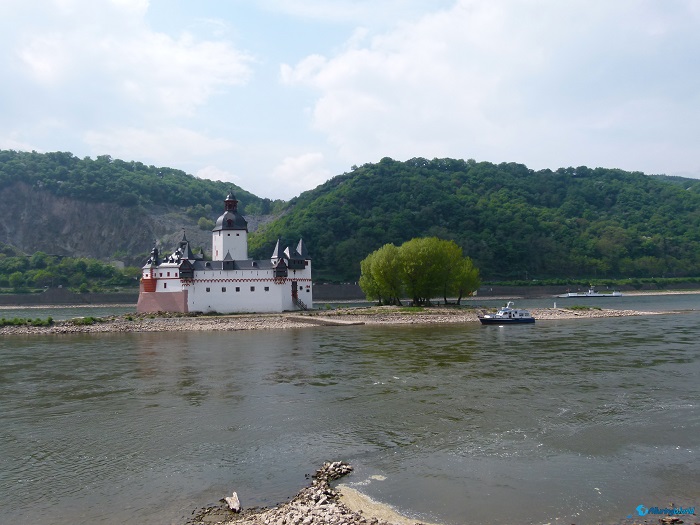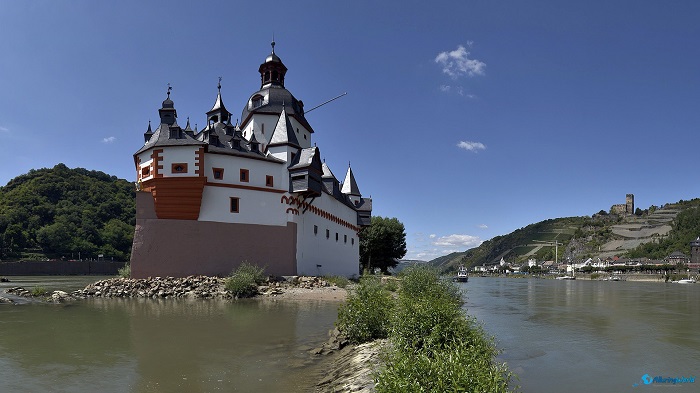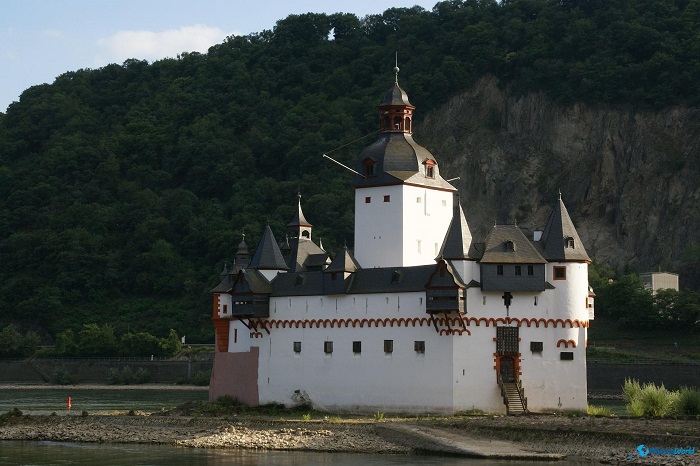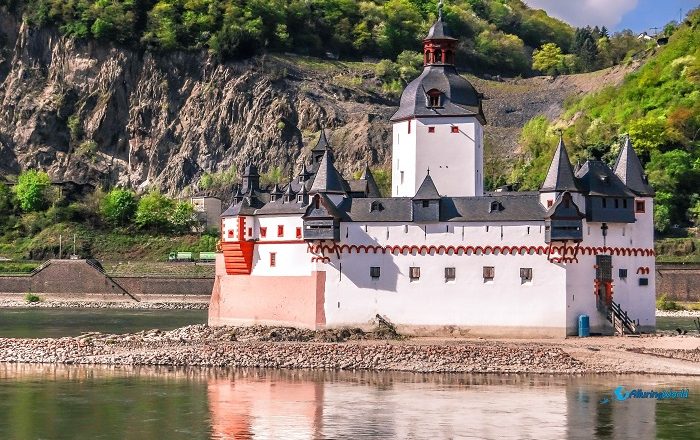Pfalzgrafenstein Castle is a striking medieval fortress that is located on a small island in the middle of the Rhine River, near the town of Kaub in the eastern part of the State of Rhineland-Palatinate, within the western part of the Federal Republic of Germany. Its unique setting, perched on the tiny Falkenau Island, has earned it the nickname “the toll castle in the river,” and it is one of the most picturesque and well-preserved castles along the Rhine as it was built in the early 14th century, and it served as a key strategic and economic stronghold, playing a crucial role in controlling and taxing the passage of goods along the Rhine River, one of Europe’s most important trade routes.
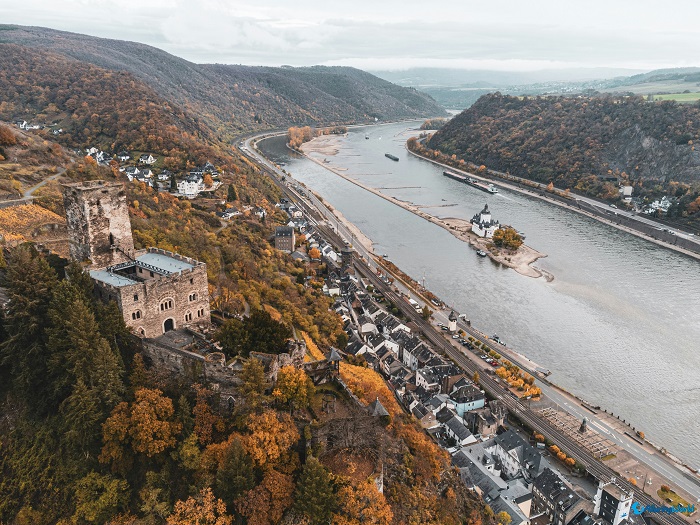
Construction of the castle began in 1326 under the direction of King Ludwig IV, also known as Ludwig of Bavaria. As he commissioned the castle to strengthen his authority over the Rhine and to assert control over the lucrative trade that flowed through the region, the castle was initially built as a toll station, and its location on an island made it nearly impossible for ships to avoid. To enforce the tolls, a massive chain was stretched across the river, forcing passing ships to stop and pay, but if merchants refused to comply, their goods were confiscated or, in some cases, the ships themselves were seized. The imposing central keep, which was the first part of the structure to be completed, stands at 20 m (66 ft) tall and is shaped like a pentagon, a design that added both defensive strength and aesthetic uniqueness.
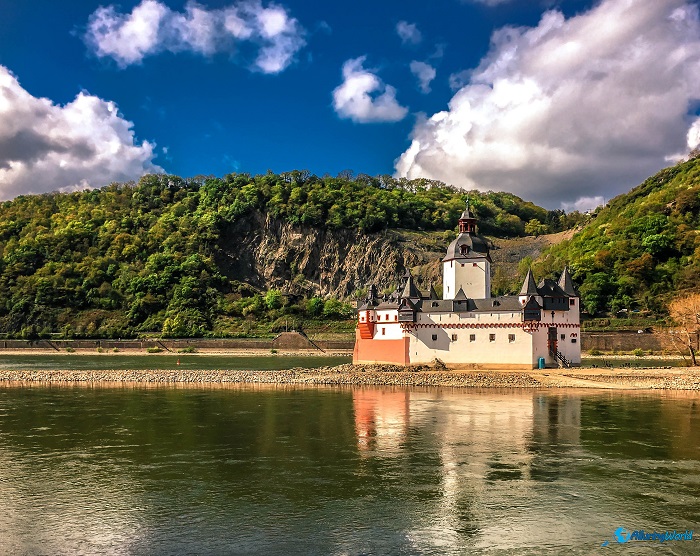
Over the centuries, Pfalzgrafenstein Castle underwent several expansions and fortifications and in the 17th century, a ring wall was added to surround the keep, along with a courtyard and several defensive towers. The castle’s relatively small size meant that the construction was carried out efficiently, with stone and timber materials sourced from nearby quarries and forests along the Rhine, but the location of the castle on a rocky islet provided natural protection, and even though it also posed challenges for construction, workers had to contend with the constantly shifting river currents and the limited space on the island. Despite these difficulties, the builders succeeded in creating a strong and formidable fortress that has stood the test of time.
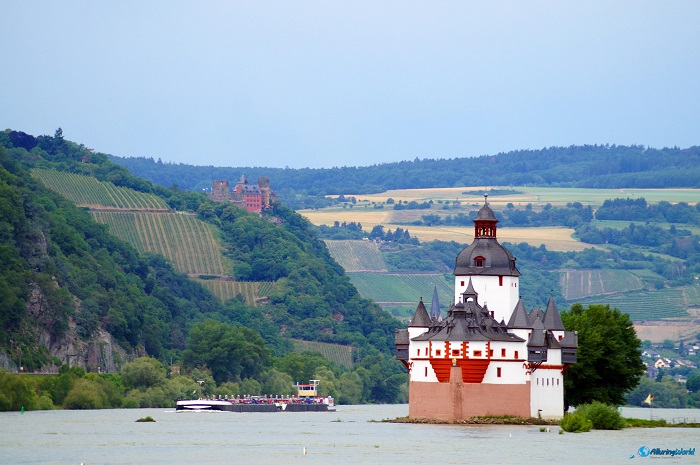
In its heyday, Pfalzgrafenstein Castle played a vital role in maintaining the power of the Elector Palatine, the ruler of the Palatinate Region. The castle was part of a system of fortresses and toll stations along the Rhine, which provided significant revenue for the Electors through the collection of tolls on river traffic, and the castle’s position at a narrow section of the Rhine made it an ideal point for monitoring and taxing ships. This system of tolls was so effective that it remained in place for centuries, and Pfalzgrafenstein continued to function as a toll station until the early 19th century, when the practice was finally abolished.
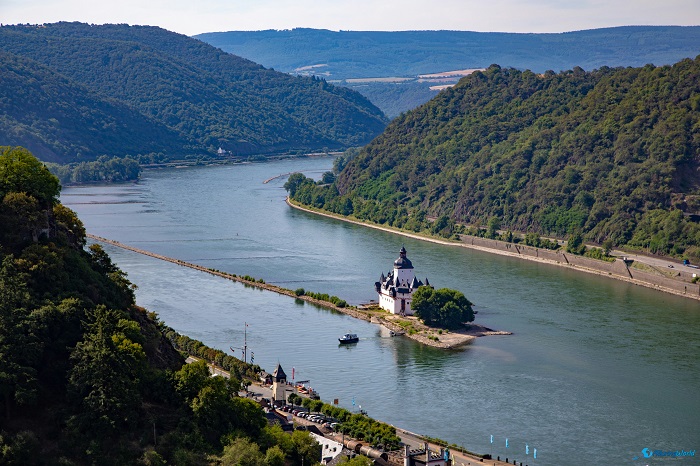
Today, Pfalzgrafenstein Castle is a popular tourist destination and a symbol of the medieval history of the Rhine Valley. It has retained much of its original structure, thanks to careful preservation efforts, and its remote location on the island has helped protect it from the ravages of war and time, so that nowadays the castle can be visited year-round, offering a fascinating glimpse into the region’s past and the medieval practice of river toll collection. Visitors can explore the interior of the castle, which includes the toll chamber where merchants once paid their dues, as well as the living quarters of the castle’s garrison, but the views from the top of the keep are particularly stunning, offering a panoramic perspective of the Rhine River and the surrounding valley, a landscape dotted with vineyards and other medieval castles.
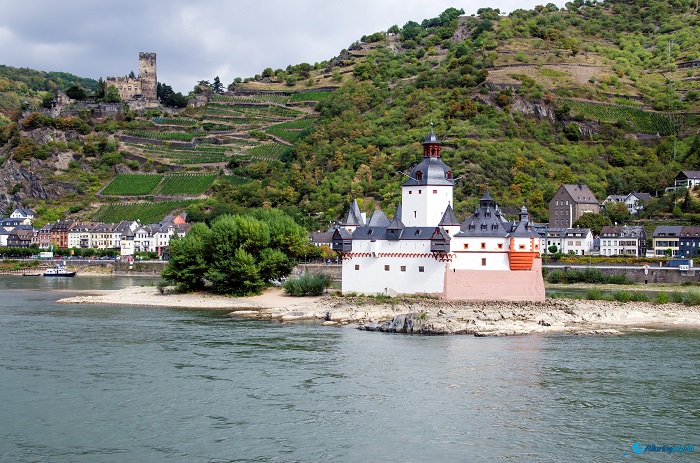
To visit Pfalzgrafenstein Castle, the journey begins in the town of Kaub, located on the eastern bank of the Rhine River, and as Kaub itself is steeped in history, with charming medieval streets and the imposing Burg Gutenfels Castle, which overlooks the town from a nearby hill, from there, a short ferry ride takes visitors across the river to Falkenau Island, where Pfalzgrafenstein Castle stands. The ferry operates regularly, and the trip only takes a few minutes, adding to the sense of adventure as you approach the castle by boat, but for those driving to Kaub, the town is accessible via the B42 road, which runs along the eastern side of the Rhine. Still, visitors coming from larger cities like Frankfurt or Cologne can also reach Kaub by train, as the town is a stop on the scenic Rhine Valley railway line.
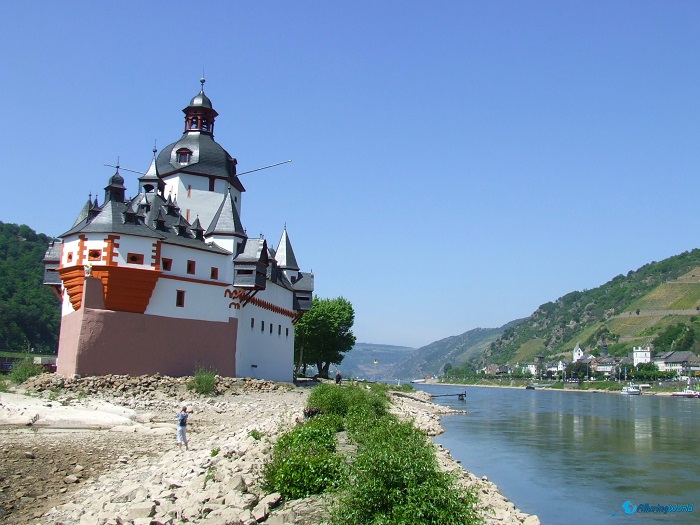
The best time to visit Pfalzgrafenstein Castle is during the spring or summer months, when the weather is pleasant and the surrounding Rhine Valley is in full bloom. The castle’s whitewashed walls and red trim stand out vividly against the backdrop of green hills and blue skies, making for excellent photo opportunities, nonetheless, fall is also a beautiful time to visit, as the vineyards along the Rhine take on warm hues of gold and red, creating a picturesque autumn landscape. While winter can be cold and less ideal for ferry crossings, the castle still retains a certain fairytale-like quality when shrouded in mist or lightly dusted with snow.
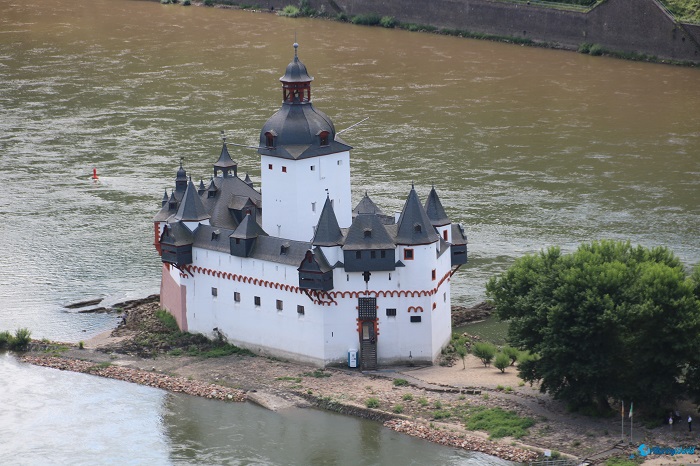
Pfalzgrafenstein Castle is part of the Upper Middle Rhine Valley, a UNESCO World Heritage Site known for its stunning natural beauty and its wealth of historical and cultural landmarks, and a visit to the castle can easily be combined with other nearby attractions, such as the aforementioned Burg Gutenfels or the famous Lorelei rock, which has inspired legends and songs for centuries. Many visitors choose to take boat tours along the Rhine, allowing them to see Pfalzgrafenstein Castle from the water, as well as several other castles that line the riverbanks.
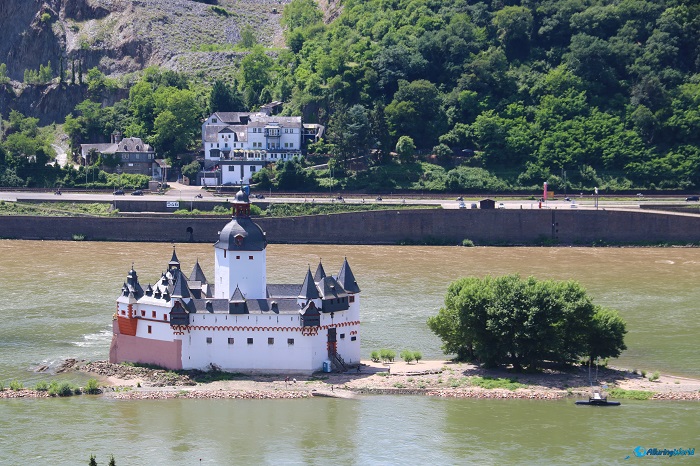
All in all, what makes Pfalzgrafenstein Castle particularly captivating for visitors is its combination of historical significance and picturesque setting. Unlike many other castles that have been heavily restored or modernized, Pfalzgrafenstein has remained largely untouched since its construction, offering an authentic glimpse into medieval life on the Rhine, and its isolated location on the river adds an element of mystique, making it feel like a fortress lost in time, so whether you’re interested in history, architecture, or simply looking for a unique and scenic destination, Pfalzgrafenstein Castle provides an unforgettable experience that brings the rich history of the Rhine Valley to life.
